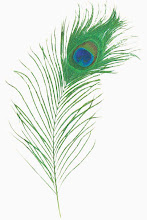Ramgopal Vijayvargiya
He was born in 1905 at Baler Sawai Madhopur district in Rajasthan state in India. He was Principal of Rajasthan Kala Mandir and Rajasthan School of Art from 1945 to 1966. He was awarded the Padma Shri in 1984.His first exhibition was held in 1928 at Fine Arts & Crafts Society, Calcutta and thereafter many in other major cities of India.
Awards : Maharaja Patiala, 1934; Rajasthan Lalit Kala Akademi, 1958; Padmasri, 1984. Fellow, Lalit Kala Akademi, New Delhi, 1988. In 1998 he received the honour of ’Sahitya Vachaspati’ from Hindi Sahitya Sammelan, Prayag.
Ramgopal Vijayvargiya was Principal, Rajasthan School of Arts & Crafts, Jaipur, 1961-66. Vice President, Rajasthan Lalit Kala Akademi, 1958-60. His first exhibition was held in 1928 at Fine Arts & Crafts Society, Calcutta and thereafter many one-man shows in major cities of India. Awards : Maharaja Patiala, 1934; Rajasthan Lalit Kala Akademi, 1958; Padmasri, 1984. Fellow, Lalit Kala Akademi, New Delhi, 1988; the Akademi organised a retrospective spanning 40 years of his art experience. He is also known as a poet and a writer. Publications on him include: 'Vijayvargiya Picture Album', 1934; 'Meghdoot Chitravali' 1945; 'Behari Chitravali', 1945; 'Rajasthani paintings', 1952; Monograph published by Lalit Kala Akademi, 1988; 'Roopankar' (his biography), 1991 and volume II 'Paintings' 1995. In 1997 a 'Retrospective' was held at Kumar Gallery, New Delhi. In 1998 he received the honour of 'Sahitya Vachaspati' from Hindi Sahitya Sammelan, Prayag.
Ramgopal Vijaivargiya was born in 1905 at Baler, Sawai Madhopur, Rajasthan. When he was a young boy he was so impressed by the work of a wandering Sadhu, drawing rural scenes in red and blue pencil that Vijaivargiya decided to become an artist. He was encouraged by his father in this endeavor; he enrolled himself at the Maharaja School of Art Jaipur and at the age of eighteen finished a five year course in eight months under the guidance of Shailendranath De. In the next five years he had developed his own distinct style in the tradition of the Bengal School.
He also displayed a great talent for literature and poetry. He drew the thematic inspiration from the Ramayana and the Mahabharata epics, tales from the Jatakas (Buddha's Life) and Ragamala-Indian classical music. Being a poet, he chose subjects from Kalidasa's, Meghdoota (cloud messenger), Raghuvamsa, Shakuntalam and Kumar Sambhava; Jai Deva's, Geet-Govinda and Keshav's Rasikpriya. Many of his excellent works were based on the sensuous poems of the Persian poet's series on Gulistan, Bostan and Deewan-i-Hafiz and Rubaiyat of Omar Khayyam.
Right from those early years, until the end of his long life (2003), Vijaivargiya enriched the world of Indian art and literature. His art, essays and poems appeared in many magazines, including the renowned Modern Review, which regularly published works of the master artists.
There have been numerous exhibitions of his work in the major cities, the first of which was held in 1933. Lalit Kala Akademi Delhi held a retrospective in 1983 and published a Monogram in 1988. Among the various albums of his paintings are two Felicitation Volumes, Rupankan (1995), wherein Dr. Vijay Shankar Srivastava writes:
“The desire to be creative, to produce something new became the way of the life of Vijaivargiyaji. He is always enterprising in his creations- be it literary or artistic. In him is an excellent urge and aptitude to give expression to new ideas and forms through pen and brush. A wonderful balance of tradition and creativity became the symphony of his works. The originality and uniqueness coupled with the delicacy of his lines is only excelled by the swiftness with which he draws them…”
In this collection of 50 works, Buddha, Abhisarika-Meghdoota, Radha-Krishna-Geet-Govinda all reflect Vijaivargiya's typical early style of romantic innocence. His rendering from Omar Khayyam is masterly drawn, in a manner that owes little to the classical way of drawing but instead expresses a free spirit that was so distinctive of this master artist. He drew lines as if he was composing a poem. Although he retained his stylistic roots, he evolved a vibrant palette, here it is reflected in the Trees in Bloom, contemporaneity came natural to him. Vijaivargiya remained lively, vivacious and innovative, constantly changing in tune with the time. He was an acclaimed artist for more than 80 years. This exhibition is a tribute to a master who made an indelible impact on Indian Art and Culture.
Some work by Ramgopal Vijayvargiya
 |
| Apsara |
 |
| 'Nal Damyanti' |
 |
| Meghdoot 1 1955 |
 |
| Yakshani Meghdoot 1995 |
 |
| 'Pratiksha' 1996 |
 |
| 'Urmila & Muni Vashistha' (1972) |
 |
| 'Ragini Todi' |
 |
| 'Fruit seller' |
 |
| 'Village Women' 1995 |
 |
| 'Girl Dressing' (1992) |








1 टिप्पणी:
sir , m research scholar, can i get more paintings or info. about ramgopal vijayavargiya?
एक टिप्पणी भेजें